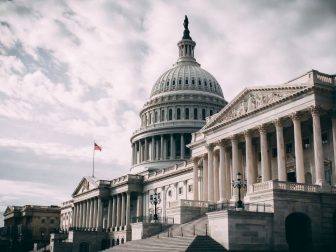Revealed: What Happens to Bitcoin This Friday - Explosive Growth Predicted
EDITOR’S NOTE: The following piece is news commentary and not intended to provide financial advice under any circumstance. Readers should only invest in any asset after consulting a credentialed financial expert. Nothing written in this article should be taken as financial guidance. Do not invest based on any item published or posted by The Western Journal.
As we approach the fourth Bitcoin halving Friday, April 19, the crypto landscape is perched on the precipice of change. This isn’t just about a surge in market volatility or an arcane tech event; it’s a watershed moment for economic autonomy worldwide and has the potential to, yet again, create a new class of millionaires and even billionaires.
Having spearheaded efforts at the American Blockchain PAC, as its chief executive officer and co-founder, I’ve seen firsthand how profound these shifts can be.
In my view, this Friday’s Bitcoin halving is Bitcoin’s last great divide and presents an opportunity to truly prosper in the all-American quest for financial sovereignty. And to be clear, this commentary does not constitute financial advice. Prospective investors should seek expertise from financial professionals before engaging in cryptocurrency transactions.
The concept of halving — Bitcoin’s programmed reduction in mining rewards — is both simple and revolutionary.
The Bitcoin halving takes place every four years. April 19 will be Bitcoin’s fourth-ever halving since Satoshi Nakamoto introduced it to the world on Jan. 3, 2009. Halving ensures that Bitcoin’s total — or max — supply will never exceed 21 million coins. This built-in scarcity mimics precious resources like gold, but operates in the digital realm.
The very first, or initial reward, was 50 bitcoins per block. Previous halving dates were Nov. 28, 2012, to 25 bitcoins; July 9, 2016, to 12.5 bitcoins; and May 11, 2020, to 6.25 bitcoins.
Each halving event results in a 50 percent decrease in block rewards.
After this next one, the fourth halving, the block reward will be reduced from 6.25 to 3.125 BTC per block.
This engineered scarcity comes at a time when faith in traditional financial systems is waning; not just in the United States, but globally.
The Biden administration’s handling of inflation has left many Americans searching for an alternative to the Federal Reserve’s control. Bitcoin, with its decentralized design, offers an alternative to government-managed currencies, promising a new kind of financial sovereignty; to fulfill Bitcoin’s and its underlying blockchain technology’s promise of liberty and prosperity for all.
Comparing Bitcoin to traditional inflation hedges like gold and real estate illuminates its potential.
It also helps that Bitcoin is the world’s largest cryptocurrency by market cap at $1.23 trillion.
There is good reason why in his design paper, Satoshi said Bitcoin is akin to digital gold, writing, “The steady addition of a constant amount of new coins is analogous to gold miners expending resources to add gold to circulation. In our case, it is CPU time and electricity that is expended.”
While real estate has geographical constraints and gold requires physical storage and verification, Bitcoin is infinitely divisible and can be transferred globally at minimal cost. Its authenticity is guaranteed by blockchain technology, making it nearly impervious to counterfeiting — a stark contrast to the intricate and often cumbersome methods required to validate gold.
As the U.K.’s Independent noted, “The halving in 2012 saw bitcoin’s value shoot up by 80 times, while the 2016 halving preceded a 300 per cent rise in bitcoin’s value. In the 16 months following the 2020 halving, the price of bitcoin rose more than 600 per cent.”
While the future is unclear, it is within the realm of possibility that Bitcoin’s price will rise even higher than that in the weeks and months after this next halving.
Yet, despite its advantages, it’s essential to recognize that Bitcoin is not immune to volatility.
Its price can fluctuate wildly, influenced by market sentiments and regulatory changes. As such, while it offers a visionary alternative to traditional assets, it carries its own set of risks.
Bitcoin’s design inherently critiques and offers an alternative to the established or traditional financial order. It’s a call to arms for those who believe in the power of individual agency against centralized control.
As we stand on the cusp of this halving event, it symbolizes more than just economic mechanics; it represents a continuing fight for personal liberty in a heavily surveilled and financially imprisoned world.
As we ponder on the implications of Bitcoin’s halving, let us not see it merely as a financial decision, but as a philosophical stance on how the future of money should be shaped. It’s not just an investment; it’s a commitment to a different vision for the future.
This article appeared originally on The Western Journal.











